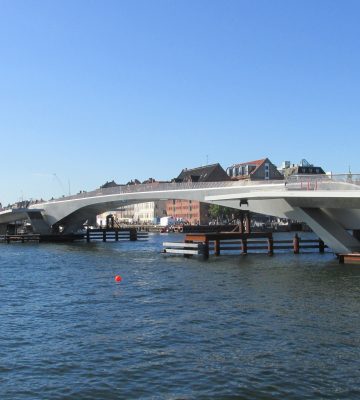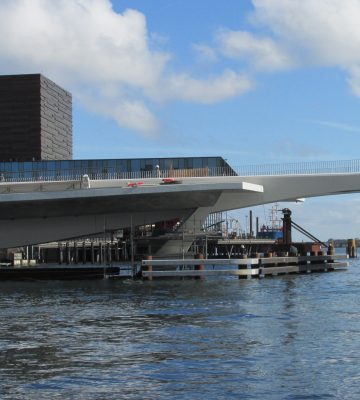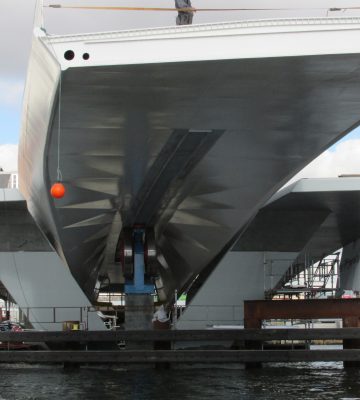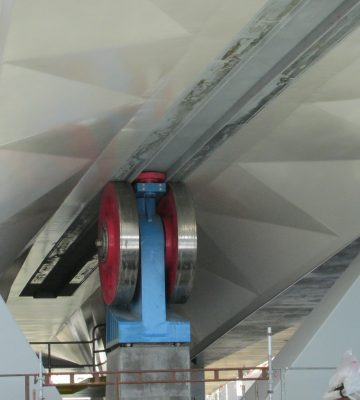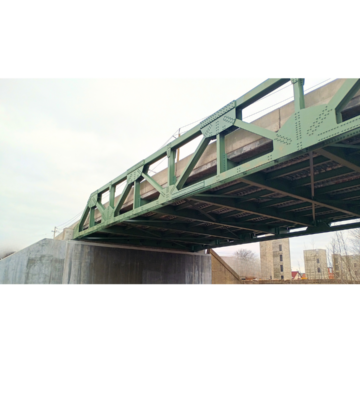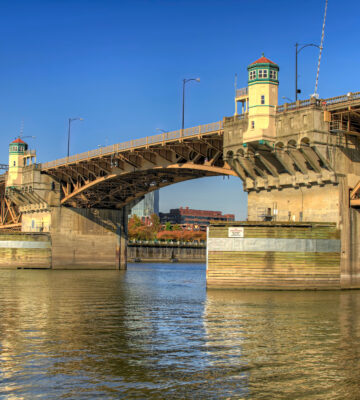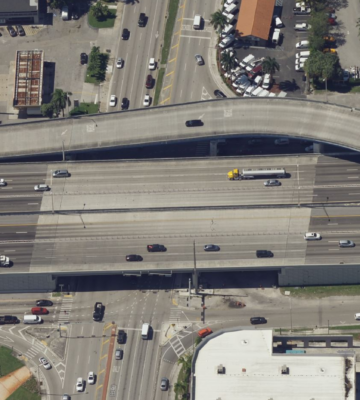Hardesty & Hanover teamed with UK-based Studio Bednarski and Flint & Neill to win the international competition to design the new Inderhavnen Bridge, in Copenhagen, Denmark. The winning design was developed for Københavns Kommune (Copenhagen City Council) as part of the Inner Harbor development.
The bridge functions on a sliding mechanism with an opening that spans 50m, and a total length of 180m. The bridge deck is 7m wide and has a low structural profile in order to minimize obstruction to views along and across the harbor. Another significant feature of the bridge is the inclusion of viewing platforms at the edge of the navigation channel. The platforms provide a safe position for pedestrians and cyclists to view the bridge movement and be in close proximity to the passing ships and boats.
The bridge has a slightly sinuous alignment which extends the bridge and maximizes the length of the adjoining ramps. This geometry permitted the ramp grades to be limited to 4%. This grade balances the needs of the pedestrians and cyclists with the desire to limit the intrusion of the ramps onto the harbor sides.
The bridge superstructure consists of the two main cantilevered moving sections which have smooth soffits reminiscent of a boat hull. The sculptural form of the moving spans can be highlighted in a number of ways through the use of lighting or surface finishes without being obtrusive to the users or the surrounding environment. The approach ramps consist of clean box girder elements that provide an efficient structure that is elegant yet low maintenance.
The retractile bridge has been nicknamed “The Kissing Bridge” due to the nature of the two moving spans that meet in the center when closed. The bridge opened in August 2015.

